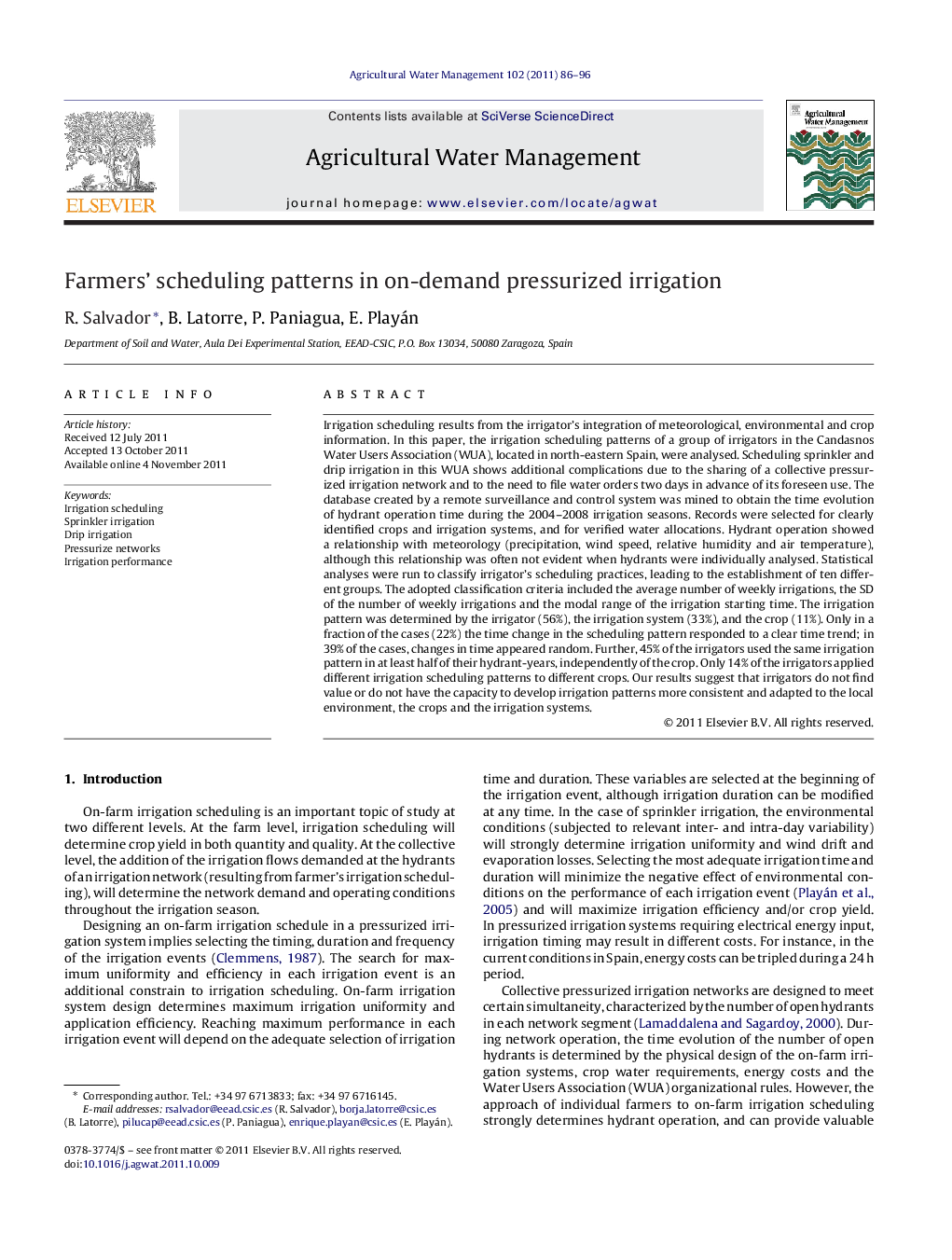| کد مقاله | کد نشریه | سال انتشار | مقاله انگلیسی | نسخه تمام متن |
|---|---|---|---|---|
| 4479244 | 1316431 | 2011 | 11 صفحه PDF | دانلود رایگان |

Irrigation scheduling results from the irrigator's integration of meteorological, environmental and crop information. In this paper, the irrigation scheduling patterns of a group of irrigators in the Candasnos Water Users Association (WUA), located in north-eastern Spain, were analysed. Scheduling sprinkler and drip irrigation in this WUA shows additional complications due to the sharing of a collective pressurized irrigation network and to the need to file water orders two days in advance of its foreseen use. The database created by a remote surveillance and control system was mined to obtain the time evolution of hydrant operation time during the 2004–2008 irrigation seasons. Records were selected for clearly identified crops and irrigation systems, and for verified water allocations. Hydrant operation showed a relationship with meteorology (precipitation, wind speed, relative humidity and air temperature), although this relationship was often not evident when hydrants were individually analysed. Statistical analyses were run to classify irrigator's scheduling practices, leading to the establishment of ten different groups. The adopted classification criteria included the average number of weekly irrigations, the SD of the number of weekly irrigations and the modal range of the irrigation starting time. The irrigation pattern was determined by the irrigator (56%), the irrigation system (33%), and the crop (11%). Only in a fraction of the cases (22%) the time change in the scheduling pattern responded to a clear time trend; in 39% of the cases, changes in time appeared random. Further, 45% of the irrigators used the same irrigation pattern in at least half of their hydrant-years, independently of the crop. Only 14% of the irrigators applied different irrigation scheduling patterns to different crops. Our results suggest that irrigators do not find value or do not have the capacity to develop irrigation patterns more consistent and adapted to the local environment, the crops and the irrigation systems.
► In studied WUA, the number of open hydrants was influenced by meteorology.
► Individual irrigation scheduling patterns could be classified in ten groups.
► The irrigator, irrigation system and the crop explained in this classification.
► Did not find clear trends associating types of irrigation schedule to crops.
Journal: Agricultural Water Management - Volume 102, Issue 1, 15 December 2011, Pages 86–96